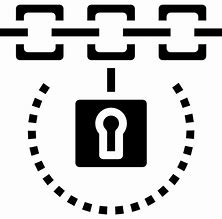Unraveling Blockchain Technology
Unraveling Blockchain Technology.
Over the years, the world has been engrossed by the emergence of Blockchain Technology. The global blockchain market is now anticipated to grow to over $80 billion by 2024 as more companies adopt distributed ledger technology with unlimited possibilities of implementing it wherever you want.
But many struggle to explain what it is.
The Blockchain Myth
Is Blockchain a cryptocurrency? OR do you need cryptocurrency to implement a Blockchain?
Absolutely not. They are closely related but aren’t the same. You definitely don’t need a cryptocurrency to implement Blockchain. To put in simple words, Bitcoin was the first application of Blockchain, and that’s when the correlation of Cryptocurrency and Blockchain started.
Also Read more about Cryptocurrency.
Let’s demystify Blockchain
In simple terms; Blockchain is a growing “chain of blocks” / also termed as Digital ledger. A copy of the ledger is shared across all the nodes of the Blockchain network and hence called “Distributed Ledger”.
Each block consists of a series of records (financial transactions or any information or any deal or medical records, etc.
Every record has to be approved by the nodes /members of the Blockchain network, before getting into the Block.
Once the record is committed in the Block, there is no scope for any amendment. It’s totally protected. There is no central authority / governing body making a decision. The decision is collective and tamper-proof.
A copy of the Block once committed is passed onto each of the Blockchain nodes. The Blockchain network makes constant checks to ensure all the nodes hold the same copies of the ledger and ensure the data integrity is maintained across the network.
Below is a simple illustration to explain the above terminology:
Let’s take an example of a deal. Here Deal is the record.
Let’s say Mr. A is selling his property to Mr. B for $500. A record gets created with the details of the deal and, including a digital signature from each of the parties.
This record is now checked by the nodes in the Blockchain network for validity the digital signatures of both the parties and other business rules (Smart contracts) defined in the network are verified for consensus.
The records that the network has accepted are added to a Block. Once the Block is mined successfully, it gets added to the Blockchain network.

What makes Blockchain Technology secure and tamper-proof?
Every Block is identified using a Hash function. This hash function is generated by hashing together a set of attributes (the hash function of the previous block, Merkle root (all the candidate records of the Block are hashed until one single hash is derived); Nonce value; and the transaction timestamp).
In addition to the above attributes, there a difficulty level set in every Blockchain network to ensure, the hash value of the block starts with a pre-defined target value.
Some of the nodes in the Blockchain network – called Miners continuously work upon generating a hash value for the Block using all the above-mentioned attributes until they successful generate a hash value that starts with pre-defined target-value. In real-world, this consumes a lot of energy and involves complex algorithms.
The block gets added to the network only after all the records are verified by the Blockchain members and after being successfully mined. This process is called proof of work.
Hence, any attempt to tamper a record inside a Block is next to impossible. The hacker has to tamper the hash functions of all the previous blocks in the network before he attempts any tampering to the current block which is practically impossible.
Let’s understand why do we need Blockchain??
The blockchain has the potential to reinvent any transaction that requires going through a middleman, including finance, banking, contracts, and retail.
It replaces the central system with a decentralized ledger of chained immutable records created by distributed consensus; thus yielding a traceable history of the transaction, that is accessible to all the nodes in the network.
Basically, it redefines the transparency and brings in trust in this trustless world. It doesn’t factor any single point of failure (de-centralized) and makes the transactions more traceable; more transparent and incorruptible.
Next obvious question – How do we implement Blockchain?
There are majorly three types of Blockchain networks –
Public Blockchain – Anyone could participate in the Blockchain network – e.g. Bitcoin, Ethereum
Private Blockchain – It’s owned or governed by an individual organization – e.g. Bank chain, Hyperledger, Ripple
Consortium or Federated Blockchain – It’s governed by more than one organization who are members of the consortium – e.g. r3, EWF
Different types of blockchain will be used for different type of industries as and when required.
Where we require privacy and control, private & consortium blockchain are the obvious candidates and where we require openness, as well as censorship resistance public Blockchains, are a must need.

Strategies deciding best fit reflections for Blockchain
Below are some of the strategies or questions you need to ask yourself and figure out which is the best fit for the business case to be put up over Blockchain.
- Do you need the data to be stored on consistently shared data store?
- Does more than one entity contribute to the data or change the state of your system?
- Data once are written need not be updated or deleted?
- Do you have a trusted third party to validate or provide consensus to your transactions or state transitions? If yes – you don’t need a Blockchain.
- Do you need a tamper-proof log of all the transactions/state transitions/data stored in your database?
Once you decide if your business is the best fit for Blockchain; you may want to decide the type of blockchain to use.
Do you want to reveal the identity of the entities writing / participating in the transactions / state transitions?
- If yes – go for Public permissionless Blockchain – Bitcoin or Ethereum blockchain network.
- If not – go for Private permission Blockchain if you need your organization to be the sole participant – Hyperledger; Ripple.
- If not and you are fine to allow a few trusted organizations to be part of your Blockchain network then go for Consortium Blockchain – R3, EWF
A quick glance on applied use cases of Blockchain Technologies
Blockchain Technology is being widely used across industries – Financial Industries, Healthcare, Supply chain, Government organizations, Luxury goods network, Real estate property management, Digital identity, Trade and supply finance, e-voting, IP management and many more.
Blockchain in News
Alibaba [BABA] is leading the pack in blockchain patent. Alibaba, through its subsidiary Lynx International, integrated blockchain technology to track information in its cross-border logistics services. They also use blockchain technology to Fight Counterfeit Food.
Thailand has been doubling-down its efforts in blockchain technology adoption in a number of government services. Thai Government is continuing to push blockchain solutions, detailing the Revenue Department’s plans to utilize distributed ledger technology (DLT) and machine learning to fight tax avoidance, track VAT payments and fraud.
Blockchain-Based E-Voting Proves to Be A Hit in Switzerland.
Major Indian Business Schools are issuing Blockchain Certificates to Combat Fake Degrees.
Karnataka State Government is launching a Blockchain Based Platform to Protect Intellectual Property.
The organization tasked with digitizing Australia’s public sector has joined forces with a major blockchain developer to build the world’s first blockchain operating system for government and critical national industries.
IPC, a global provider of secure, compliant networking solutions and communications for global financial market participants, has announced a partnership with enterprise blockchain software firm, R3, to support Corda blockchain networks on the IPC Connexus platform.
Enterprise blockchain software firm R3 has announced that 26 French companies and five major banks have completed – know your customer (KYC) trial based on its Corda blockchain platform.
Axis bank is using Ripple for cross-border transaction network to run its remittance blockchain products.
SBI or State Bank of India– It is also planning to use blockchain for smart contracts or KYC using Bank chain. State Bank of India (SBI) is likely to go in for full-fledged deployment of blockchain in its reconciliation, remittances, and trade finance operations in FY19
ICICI bank also has two blockchain-based solutions with Emirates NBD for remittance and trade finance.
Limitations of Blockchain Technology
Low transaction throughput – Public Blockchains do ~ 5-10 tps in comparison to ~ 2000 tps for Visa and ~ 100 tps for PayPal.
Long confirmation time – Minimum confirmation time is 10 min. However private Blockchains can provide much faster confirmations.
Low data storage – they can only store the metadata (hash values)
Energy waste – POW algorithms consume huge electricity.
Immutability – Data once stored or code (smart contracts) once written cannot be reversed or altered.
Over dependency on cryptography – Loss of private key could result in data compromise.
Privacy – Some of the blockchain networks (public permissionless) do not provide much privacy.
How Blockchain and AI complement each other
AI made decisions can be tough for humans to understand. This is because AI is capable of assessing a large number of variables independently of each other. AI is expected to be used increasingly in the decision-making process in financial transactions and determine if those transactions are fraudulent and should be investigated.
Human interference would be required to audit the decisions because the amount of data processed is enormous and it is a complex task. Blockchain can simplify the audit of the decisions with the assurance that the records are tamper proof.
Also, the data held in Blockchain is highly secure due to the cryptography in the filing system. It means that blockchain is ideal for storing highly sensitive and personal data which can unlock valuable information if smartly processed. Even though data breaches are common, blockchain is safe because the databases are kept in an encrypted state, and only a private key must be kept safe.
AI can add to security. An emerging field in AI is working on building algorithms which are capable of working with data while it is still encrypted. Reducing the incidents that expose the unencrypted data could help make things much safer.
21,082 total views, 6 views today
